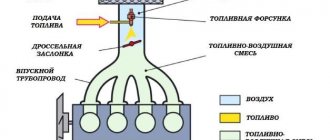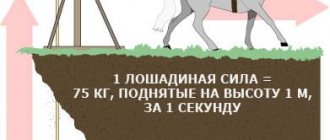Russian car brand
For other uses, see Lada (disambiguation).
Lada
| Owner | AvtoVAZ |
| A country | Russia |
| Web site | lada.RU |
Lada
(Cyrillic: Lada, recently stylized as
LADA
) is a brand of passenger cars manufactured by AvtoVAZ (originally VAZ), a Russian company owned by the French Renault Group.[1] The first cars produced by AvtoVAZ with the technical assistance of Fiat were sold under the Zhiguli brand, allegedly chosen at the suggestion of designer A.M. Cherny.[2] When cars began to be exported to foreign markets, the "Zhiguli" brand was considered inappropriate because it was difficult to pronounce for non-Russian speakers and was said to sound too close to the word gigolo.[2]
The Lada brand appeared in 1973 and has since become the main brand of AvtoVAZ cars.[3] The name Lada comes from fret
(cruiser), a type of small boat in Slavic, symbolized by the car logo. The brand has a long history in Russia and is well known in post-Soviet countries; today Lada cars are positioned as affordable, and the price is reasonable.[4]
The keys to its success were its competitive price, reliability, DIY-friendly mechanics and simple functionality. The car was built under license in several other countries. Competitive prices and ease of maintenance have made Ladas popular as police cars, taxis and a range of public service and civil defense vehicles in many parts of Europe, Africa and the Caribbean.
Biography of Lada Dance
Lada Dance is a Russian pop singer, television and film actress, and TV presenter. Popularity came to her after the creation of the group “Women’s Council”, and her solo career began with the song “Girl-Night”. But Lada became famous throughout the country for her role as lawyer Alla Prikhodko in the television series “Balzac’s Age or All Men Are Theirs...”. Also bright and memorable were the images that the artist created many years later at the “Exactly Exact” transformation show.
In the photo: Lana Dance
How the goddess of love manifests herself among the Slavs
The ancient Slavs were confident that Lada was able to persuade the goddess of Fate to work things out in a positive way. Lada is also ready to help if you need to do everything conscientiously and kindly, correct it if something goes wrong.
You will be interested in: Alive - Slavic Goddess of Life, Symbols and attributes of the goddess, mythology and legends
The Goddess is able to command the Wind, and Fire easily obeys her. Water will flow wherever the divine creation requires, and the Earth always comes to Lada’s calls for help.
All other goddesses and natural elements are subject to the Mother of God, and people have always treated her with great reverence and even some fear, thanking her for order and harmony in families.
There is an opinion that Lada brings happiness to the house, brightens the soul and makes it possible to make the right decision. It is no coincidence that so many words have been preserved in modern language that contain a root with the name of the Goddess:
- way of life;
- OK;
- palm;
- fret;
- settle (put things in order);
- cope (i.e. cope with something);
- fix (i.e. repair).
Over time, the Slavs began to perceive Lada not only as a goddess capable of bringing peace and harmony to the family, but also as a deity with the ability to mend everything that had been destroyed.
Childhood and youth
Lada was born in the fall of 1966 (this year was initially indicated on the singer’s official website, but later changed to 1969) in the family of Evgeniy and Irina Volkov from Kaliningrad.
My father worked as an engineer, my mother as a translator. Lada also has a brother who became an artist. The children were still small when their dad left the family for a woman named Elvira. Lada later said that his future life was not easy, his family with Elvira did not work out, he wrote letters to his mother and children. When she starred in the series “All Men Are Theirs...”, Lada was sometimes scared, so much so did the real facts of her life coincide with the script. The father even died much like it was shown in the film.
Lada Dance in the program “Alone with Everyone” Little Volkova demonstrated her passion for singing from an early age:
Even in kindergarten, when I was four years old, I was already a soloist. In first grade, I wrote in an essay that I wanted to become a singer. My mother sent me to study at the best music school in Kaliningrad, where I graduated in piano. When I entered the music school, the director of one of the Kaliningrad restaurants approached me during an audition and invited me to sing there. I agreed. I managed to change the musical repertoire of an average restaurant so that visitors began to come there in droves.
The school where Lada studied is famous for the fact that in different years the former first lady of Russia Lyudmila Putina (then Shkrebneva) and People's Artist of Russia Oleg Gazmanov graduated from it. Lada Volkova was a member of the school music group and played the keyboard. After graduating from school, she entered a music school, began studying academic vocals, and then moved to the jazz and pop department, because she really liked the style of jazz music. At a young age, Lada was already surrounded by the best musicians of Kaliningrad, who convinced the girl to develop her talent.
Music
In 1988, Volkova became a participant in the music festival in Jurmala, where Alexander Malinin won his first victory. Lada did not win any awards, but, having met Svetlana Lazareva and Alina Vitebskaya there, she moved to Moscow, where, with the help of Vitebskaya’s husband, Khariton, the “Women’s Council” trio was created. Lada Volkova – Staircase The highly social theme of their repertoire quickly gained popularity. Songs “Wooden Citizen”, “No Container”, “Who’s Last?” and others reflected the real situation in the perestroika USSR. Girls were invited to famous programs of that time, for example, “Spotlight of Perestroika.” But the “Women’s Council” did not last long; at the very beginning of the nineties, the team broke up. Women's Council - Wooden Citizen Lada didn’t even want to think about returning to Kaliningrad. Moreover, at Morning Mail she met Philip Kirkorov, and he invited her to become a soloist in his band. She appeared in his program with several compositions, and soon, with the help of composer Leonid Velichkovsky, she began performing solo.
Group "Women's Council"
During that period, two hits appeared that brought the singer recognition from the public: “Girl-Night” and “You need to live high” / “Reggae in the night.” In 1993, the singer’s debut studio album, “Night Album,” was released. Lada's popularity grew exponentially, but a quarrel with Velichkovsky put an end to their cooperation.
To stay afloat, the artist went to the popular group “Kar-Man” for a “warm-up”. Once Sergei Lemokh called the singer “Bikini Dance”, referring to her super short shorts in which she performed. The director of Lada, Sergei Lavrov, having heard this phrase, said: “Why bikini, you have a name! Let you be Lada Dance." Thus the pseudonym was born.
Lada Dance in her youth
In 1994, Lev Leshchenko supported the young singer, singing the song “No Need, No Need” with her in a duet. Dance's solo career took off. She participated in the highest-grossing national concerts, went on tour, and recorded the album “Dancing by the Sea.” Lada Dance and Lev Leshchenko - To no avail, to no purpose Lada was accepted as a pop star, German composers wrote several new songs for her. In disco style, she released a new album, “Taste of Love” (1996), and became a participant in the foreign festival Popkormm. At the same time, a photo shoot for Lada Dance was organized for Playboy magazine.
Lada Dance in Playboy (1996)
In 1997, two albums of the singer were released at once - “On the Islands of Love” and “Fantasies”. In the latter, she performed several compositions by foreign performers, including I Wanna Be Loved by You by Marilyn Monroe and Woman in Love by Barbra Streisand:
...the album is jazz. Lundstrom played all these favorite hits of mine in full, including songs from my Russian album. It wasn't me who wanted it, it was my producer who wanted it. I am a modest person, I sing opera, I sing amazing romances. There just isn't enough time for everything. Those lucky people who sometimes go to karaoke with me, they understand what singing Lada Dance is. This album “Fantasies” was like a presentation of me as a jazz singer.
Lada Dance’s latest album to date is “When the Gardens Bloom” (2001), which includes the tracks “Not Fate”, “President”, “Shaibu”, “Only One Time”.
It was not as successful as the previous ones, but a video clip was shot for a song from Anna German’s repertoire. Later, two more videos appeared - “How I Loved” and “Control Kiss”. Lada Dance - Once a year the gardens bloom After this, Lada almost did not release new songs. She quarreled with her husband and producer; in addition, her two growing children did not allow her to tour. Her generation of performers was replaced by new ones - the fosterlings of the “Star Factory”. Dance became interested in acting, and in 2006 she opened a recruitment agency. The business did not bring the biggest, but stable money, and Lada was able to afford to move away from musical creativity. Only in 2015 did she make a statement about her upcoming return to the stage, but fans had to wait almost five more years. In 2019, a new Lada Dance video called “Oil” appeared, and in 2020 a video was created for the song “Ale, Alyosha,” in which the artist not only sings, but also dances on the pole, demonstrating excellent physical shape. Blogger Sergei Mezentsev starred in the video. Later, Lada Dance together with rapper Basta in Mezentsev’s video for the song “Bestia”.
Lada Dance - Hello, Alyosha
Lada in the pantheon of Slavic Gods
Mother Lada among the Slavs is the goddess of beauty, love, prosperity, prosperity and fertility. The goddess maintains peace and harmony in the house and is responsible for family unions. Lada keeps everything created in the world in balance and harmony.
Lada is considered the progenitor of a number of Slavic divine beings:
- Perun - the Thunderer;
- Morena - goddess of winter and death;
- Lely - the goddess of girlish love, the beginning of spring;
- The goddesses of grace and Summer are alive;
- Polel - the god of a strong family, long-term relationships and mature conscious love.
Image of Lada
The image of the goddess Lada has survived to this day. The Slavs depict the divine being in the form of a young, bright and at the same time strict woman. Her hair is long, greenish or yellow in color.
Often, the Mother of God Lada was depicted in green robes while blessing the fields for timely ripening and a rich harvest.
Attributes of Lada
The main attribute of this goddess is the swan, which personifies purity, fidelity and love. Moreover, these associations with the beautiful swan have survived to this day.
The Slavic goddess also has an attribute. This is a circle. It represents the universe along with an inverted base-up triangle that symbolizes its heart.
Of the trees, the main attribute of Lada is birch. It is considered a purely female tree and is endowed with a considerable number of magical properties. The star is recognized as a heraldic sign.
From the new harvest, Lada is presented with fruits, grains and honey. To attract beauty, the goddess was presented with flowers, and coins were offered for wealth.
Commandments
The commandments of the Slavic Mother of God are another confirmation of the importance of the purpose of a woman, who is her husband’s life partner, her successor and keeper of comfort and warmth in the home. The commandments of Lada help a woman become truly happy. They sound like this:
- In order for the wedding to bring as much happiness as possible, it should be held in the summer months;
- women who abandoned their husbands will never find joy and happiness in life;
- having abandoned a child, a woman will not be able to know happiness in any of the worlds;
- everything in the house should happen with pleasure and soul, then harmony will appear in the family;
- the birth of children, procreation is the main task of every woman-mother;
- it is necessary to live in harmony with nature, and not in opposition to it;
- A woman’s duty is to respect and honor her husband, and a man’s duty is to protect and love his wife;
- preserving the family is the task of both spouses; you need to be able to go through both light and dark moments in life without giving up family ties;
- it is necessary to wake up with the sun, and to fall asleep with the sunset; daytime sleep is not held in high esteem by the goddess;
- the youngest son remains to live with his parents and is obliged to support them and help them in old age;
- the clan strengthens with an increase in the number of children;
- divine patrons are the roots of the clan, therefore for its prosperity and well-being it is necessary to maintain honor to the deities.
You may be interested in: Perun: God of thunder and lightning among the Slavs, origin, mythology and legends, amulets and symbols of the Thunderer
It would seem that such simple canons helped the ancient Slavs strengthen family ties and live in harmony and complete harmony. It is worth noting that the commandments have not lost their relevance today. Only the number of children in families has decreased, which is why the bonds have become weaker.
Film and television
In 2002, Lada began to build a career in cinema: first she starred in a cameo role in the comedy series “Medics”, then she played a school friend (and a cameo) of the main character in the detective story “The Return of Mukhtar” (the “Star Hunt” series).
Lada Dance on the set of “The Return of Mukhtar”
Lada Dance’s main acting success was her Alla Prikhodko from Dmitry Fix’s television series “Balzac’s Age or All Men Are Theirs...”. Her on-screen friends were played by Yulia Menshova (Vera), Zhanna Epple (Yulia) and Alika Smekhova (Sonya). “Balzac’s age, or All men are their own...”. Fragment Dance remembers filming the film with a certain amount of mysticism. Sometimes it seemed to her that the screenwriter, without realizing it, was writing her and her partners’ real fate. For example, after the episode where Smekhova holds a baby in her arms, the actress actually had a child, and Zhanna Epple divorced her husband, repeating the story of her heroine. Lada even asked the scriptwriter to write only good things for her heroine.
The four main characters of the series
The series was a huge success, and in 2013, in honor of March 8, a continuation of the melodramatic comedy was released - “Balzac's age or All men are the same... Five years later.” TV viewers found out how the fates of the heroines developed further.
After 8 years, a continuation of the series was released
Other roles appeared in Lada Dance’s filmography. In the trilogy about Stepanych's Voyages - Thai, Spanish and Mexican - she played Manana, Vorkutidze's wife, in the company of such Russian cinema stars as Ilya Oleinikov, Stanislav Sadalsky and Lyubov Polishchuk. Unsolved secrets. Lada Dance In the youth comedy “Three on Top,” the actress appeared as Tambov spill businesswoman Stella Paramonova, and in the film “Territory of Beauty” she played star patient Alina Rozaeva. Lada Dance in the show “Exactly the Same” The artist was also remembered for her participation in the show “Exactly the Same” in 2016. Lada performed in the images of Edita Piekha, Sergei Penkin, Jennifer Lopez. Her work in the image of the Soviet pop singer Vadim Mulerman with the song “Lada” became especially striking. At the end of the competition program, the singer was awarded a special jury prize.
Recommendations
- "BRIEF-Renault now owns more than 50% of Alliance Rostec Auto BV." Ward
. January 6, 2022. Retrieved January 20, 2022. - ^ a b
"Origin of the name" Zhiguli "".
history.vaz.ru
. Retrieved December 14, 2022. - “40 years ago the VAZ-2101 car was given the name “Zhiguli.” RIA Novosti
(in Russian). September 7, 2010. Retrieved December 15, 2022. - "" AvtoVAZ "new production of LADA Xcode for five years." Vedomosti
. August 28, 2016. Retrieved December 15, 2022. - ^ a b
Ed. Maslov, G.V.; Mirzoev, G.K.; Kotlyarov, V.A. Flame of high thought. Office of the Chief Designer of AVTOVAZ. Tolyatti: AVTOVAZ. Part one. 2000 (Official chronicle of AvtoVAZ with memories of engineers) (in Russian) - Leeman, Michael R. (2002). "Riding the survivors of the Soviet Union." In Wollen, Peter; Kerr, Joe (ed.). Autopia: Cars and Culture
. Books Reaction. pp.164–5. ISBN 978-1-86-189132-7. - Parissen, Stephen (2014). The Life of a Car: The Complete History of the Automobile
. Books by Thomas Dunne. pp. 248–9. ISBN 978-1-25-004063-3. - ^ a b
Hamilton, Peter (2002).
"Lada: a cultural icon." In Wollen, Peter; Kerr, Joe (ed.). Autopia: Cars and Culture
. Books Reaction. pp.191–8. ISBN 978-1-86-189132-7. - ^ a b
Lada // Andy Thompson. Cars of the Soviet Union, Haynes Publishing, 2008. - Lore, Steve (10 August 1989). "Lada is at the forefront of perestroika." New York Times
. - Roberts, Andrew (23 January 2012). "Lada has the last laugh." Daily Telegraph
. London, Great Britain. - https://info.avtovaz.ru/press-releases/117703.html Niva returns to the LADA family! (EN: Niva returns to the Lada family}
Personal life of Lada Dance
Lada's first serious relationship was with her first producer Leonid Velichkovsky. The singer fell in love with the man almost immediately, but for a long time he maintained only a working relationship with her. But still he could not stand it and responded to Lada’s feelings, they began to live in a civil marriage. Leonid wrote the song “You need to live in high spirits” for the woman he loved, produced several albums and stopped promoting the Tekhnologiya group.
Lada Dance and Leonid Velichkovsky
The relationship began to deteriorate when loving fans began to appear around Velichkovsky and, according to Lada, he reciprocated some of them. The producer insisted that their relationship was destroyed by Dance because she was carried away by entrepreneur Pavel Svirsky, the “king of hams.”
Lada Dance and her second husband Pavel Svirsky
In 1996, the alliance with Velichkovsky, both personal and creative, fell apart. That same year, the artist married Svirsky, and in 1997 gave birth to his son Ilya. Two years later, their daughter Elizabeth was born.
Lada Dance with children
According to Lada, she and her husband had a passionate love, but he wanted her to leave the stage. When the woman found out that Svirsky had someone else, she filed for divorce, which was difficult for her. Out of nervousness, Dance lost almost 20 kilograms, and then went to a ski resort to forget. Unfortunately, she broke her leg there. The singer's friends raised money for the operation in France. Then the singer underwent a long rehabilitation, after which she began touring again, but without her former enthusiasm. Lada Dance about childhood and relationships with men To provide for herself and her children, she opened her own recruitment agency. At one time, actor Dmitry Kharatyan and singers Slava and Irina Dubtsova turned to her for help. Dance realized herself in another field - collecting vintage cars (and even opened a new business for renting vintage cars). She was also interested in interior design. The “Dancer” lamp she created has repeatedly become a participant and winner of design competitions.
The artist admits that she was never left without men, but when she received marriage proposals, she invariably refused. The difficult divorce left a deep mark on her soul, and she is in no hurry to get married.
Lada Dance now
Together with her ex-husband, Lada takes care of the children. The son became an architect, the daughter studied in London. And Lada Dance dreams of new interesting projects, both musical and cinematic. At one time, she admitted that she wanted to star in the symbiosis role of Nikita and Mata Hari. It should be noted that, even having crossed the fifty-year mark, the singer remains in excellent physical shape.
Holidays dedicated to Lada
There are many holidays in which the Slavs turned to this goddess. But the most important holiday of Lada was celebrated on March 23. This particular day is considered special; it is said that at this time it is easy to call on the goddess for help. And together with the Mother of God, happiness, light and joy will come to the house, everything around will be in order.
On this day, Slavic women and girls presented gifts to Lada, they were only obliged to be in high spirits, to surround themselves with gratitude to the goddess. The women put on their best clothes and went to the birches, leaned against these trees, shared their experiences, and then made requests. This process was not quick, since it was necessary to listen to the rustling of the leaves. It was believed that it was the goddess herself who gave instructions. The women believed that they turned to the Mother of God herself through the birch tree.
The goddess was also honored on the eve of Ivan Kupala. It was believed that on July 7 Lada transferred its rights to Kupala. They asked for a rich harvest from May 25 to June 2 (this period was called Rusalia). And they gave thanks for the harvest on the day of the autumn equinox - September 22.
Interesting Facts
- Lada became independent early on, because after her parents’ divorce, her mother was away from home for six months, working on ships to provide for the family.
- Lada gave birth to her first child, Ilya, at the age of 30. The singer believed that her marriage to Svirsky gave her the two most important projects of her life - a son and a daughter.
- The singer bought a house on Rublyovka as a gift for her husband, but did not have time to give it away because the divorce broke out. I did the repairs myself. Leonid Yarmolnik, Andrey Razbash, Andrey Makarevich became Dance's neighbors.
- For the first time, Lada appeared on the big stage as part of the “Women’s Council” in Ufa, after which she began to call it her favorite city and still treats it with special trepidation.
- Attaches great importance to self-care. According to the artist, she spends about one hundred thousand rubles a month on cosmetic procedures. She has not had plastic surgery yet, but if necessary, she will seek help from specialists.
- The singer loves yoga and performs asanas with ease. The latest hobby is anti-gravity yoga. Lada also does not give up horse riding and goes in for swimming.
Prayer to the goddess Lada
The exact text of the prayer has not survived to this day. Or perhaps he didn’t exist at all. It is assumed that the Slavs addressed the Mother of God in any form. To begin with, it was necessary to thank Lada for everything that was already available, then communicate with her, and only after that turn for help or ask for advice.
The most powerful prayers were considered to be those read on holidays dedicated to Lada. However, a strong desire will help you achieve what you want on other days. We turned to Lada in any difficult life situation, as well as before a long and difficult journey.
Important events in life
- 1988
: was a participant in a music competition in Jurmala. She moved to Moscow and became the soloist of the new group “Women’s Council”. - 1992
: began performing solo, the first song “Girl-Night” was written by Leonid Velichkovsky. - 1993
: released her debut disc “Night Album”. - 1994
: released the album “Dancing by the Sea”. - 1996
: married businessman Pavel Svirsky. Released the album “Taste of Love”. - 1997
: gave birth to a son, Ilya. She released the albums “On the Islands of Love” and “Fantasies”. - 1999
: gave birth to a daughter, Elizabeth. - 2000
: released the album “When the Gardens Bloom.” - 2001
: divorced Pavel Svirsky. - 2002
: began filming the film “Balzac’s Age or All Men Are Theirs...”. - 2005
: starred in the film “Stepanych’s Thai Voyage”. - 2007
: starred in the film “Three on Top 2”. - 2009
: starred in the film “Territory of Beauty”. - 2013
: starred in the film “Balzac’s Age or All Men Are Their Own... Five Years Later.” - 2016
: became a participant in the show “Exactly the Same”. Awarded a special jury prize. - 2020
: released the video clip “Hello, Alyosha.” - 2021
: preparing to release a new album “My Second Self”.
History of the Lada brand
On August 16, 1966, a general agreement was signed in Moscow between the Italian company FIAT and the Soviet Foreign Trade on scientific and technical cooperation in the development of passenger cars. Within its framework, a project for the construction of an automobile plant on the territory of the USSR was approved. This agreement also determined the models themselves: two cars in the “norm” configuration with sedan (VAZ-2101) and station wagon (VAZ-2102) bodies, and a luxury car (VAZ-2103). The Fiat 124 was immediately identified as the prototype for the “norm” , which received the title “Car of the Year” in 1967. During tests on Soviet roads, Italian cars revealed serious problems with the durability of the body and rear disc brakes. The low ground clearance and lack of towing lugs made operating the vehicles on the country roads problematic. The dissatisfaction of Soviet engineers was also caused by the lower engine - absolutely unpromising from the point of view of further development of the design. All comments of Soviet specialists were taken into account by Italian designers.
The first six VAZ-2101 cars were assembled on April 19, 1970, and the rhythmic work of the main conveyor began in August. By the end of the year, 21,530 units were assembled in Tolyatti; in 1971, this number increased to 172,175 cars, and the peak of VAZ-2101 production occurred in 1973, when 379,007 units were assembled. The plant reached its design capacity in 1974.
In 1972, production of the VAZ 2102 station wagon, created on the basis of the 2101, began. In the same year, the 2103 model was launched, which, in comparison with the 2101, was more “prestigious”. The car received a new radiator grille and optics, improved sound insulation, as well as significant changes in the interior: a new dashboard with a tachometer and clock.
In 1976, production of the VAZ 2106, an improved version of the 2103, began. In 1977, the VAZ 2121 Niva SUV was released. This car combined the properties of an SUV with the comfortable interior of a passenger car. All SUVs of that time were distinguished by a spartan interior, so the Niva with permanent all-wheel drive, a large number of innovative (world-class) solutions such as independent front suspension, a closed, comfortable all-metal monocoque body, combined with a low (by world standards) price caused a great sensation, and, subsequently, many imitations. In 1978, the VAZ-2121 was awarded a gold medal and recognized as the best car of its class at the international exhibition in Brno.
In 1979, the production of model 2105 began - essentially the same 2101 in a “modern” design. In 1983, production of the VAZ 2108 model began, the plant’s first front-wheel drive car. Some components and assemblies of the VAZ-2108 were developed jointly with the Western companies Porsche and UTS. The car had a three-door hatchback body, later the 5-door hatchback 2109 and sedan 21099 models appeared. In 2004, these cars were restyled and changed their names to 2113, 2114 and 2115.
In 1995, the 2110 sedan was released (the development of which began back in 1983). Unlike the Lada and Samara, the VAZ-2110 was positioned as a higher-class car, quite modern and competitive both externally and internally. In particular, the car was equipped with an electronic engine control system (although the first VAZ-2110s were carburetor) and a diagnostic unit (on-board computer), it was possible to install power steering and electric windows, galvanized metal was used in body parts, and a new painting technology was used bodies, etc. The appearance of the “ten” marked a new stage in the development of the domestic automobile industry. Later, based on the 2110, the 2112 hatchback and 2111 station wagon were created.
Since 2002, a joint model of AvtoVAZ and the General Motors concern has been produced - the Chevrolet Niva SUV. In 2004, a new family of AvtoVAZ front-wheel drive cars, the Lada Kalina, was launched. The car is available in sedan, hatchback and station wagon body styles. Since 2013, the second generation of this car has been produced. In November 2009, Christian Esteve, General Director of Renault in Russia, said that, according to proposals from the French side, AvtoVAZ plans to organize the production of Renault, Nissan and Lada cars on the basis of a single B0 platform (Logan platform), and also to retain the production of its own cars ultra low cost class (possibly based on Kalina).
On November 27, 2009, the Russian Technologies State Corporation and Renault The agreement provides for financial assistance to AvtoVAZ from the Russian Federation in exchange for Renault's assistance in using Renault and Nissan technologies.
In 2011, British designer Steve Mattin was appointed chief designer of Lada .
Among the Lada models, one can highlight the seven-seater Lada Largus - the only 7-seater station wagon on the Russian market and at the same time the cheapest 7-seater car.











